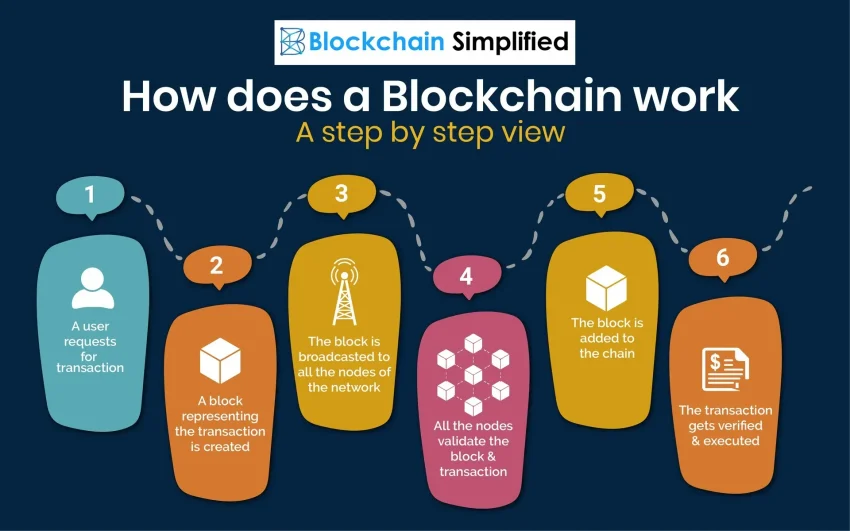Blockchain Technology: Revolutionizing Digital Transactions
Blockchain technology is revolutionizing the way we think about data storage, security, and transactions. This decentralized system allows for transparent and secure exchanges, fundamentally altering industries from finance to healthcare. With numerous blockchain applications emerging, understanding how blockchain works is becoming essential. The benefits of blockchain are vast, providing enhanced security and efficiency in various processes. As we look toward the future of blockchain, its potential to reshape our digital landscape raises intriguing possibilities.
Distributed ledger technology, often referred to as a decentralized network, is transforming traditional paradigms by enabling secure and transparent transactions without the need for intermediaries. This innovative approach to data management not only enhances security but also offers numerous advantages across various sectors. As organizations explore the implications of this emerging tech, it becomes increasingly important to grasp the fundamentals of how such virtual systems function. The rise of decentralized networks signifies a shift toward more resilient infrastructures, promising to secure our assets and information in unprecedented ways. This evolution is set against a backdrop of increased digitalization, highlighting the significance of security solutions in future advancements.
Understanding Blockchain Technology
Blockchain technology is revolutionizing the way data is stored and transferred. At its core, it is a decentralized ledger that records transactions across multiple computers, ensuring that the data is secure and can’t be altered retroactively. This means that once a transaction is recorded, it becomes immutable, providing a trustworthy way to verify and validate information without the need for a centralized authority.
To comprehend how blockchain works, it’s essential to understand its structure. Each block in the chain contains a list of transactions, a timestamp, and a cryptographic hash of the previous block. This creates a secure link between the blocks, making it nearly impossible to tamper with historical data. The consensus mechanisms, like Proof of Work and Proof of Stake, further ensure that all participants in the network agree on the state of the blockchain, enhancing its reliability.
Frequently Asked Questions
What are some key applications of blockchain technology?
Blockchain technology offers a wide range of applications including supply chain management, financial services, healthcare data management, and decentralized finance (DeFi). These blockchain applications enhance transparency, reduce fraud, and enable efficient operations across various industries.
How does blockchain technology work?
Blockchain technology works by creating a decentralized ledger that records transactions across many computers. Each block contains a number of transactions, and once a block is filled, it gets added to the chain in a linear, chronological order. This process ensures that the data is secure and tamper-proof due to cryptographic protections.
What are the benefits of using blockchain technology?
The benefits of blockchain technology include increased transparency, enhanced security, improved traceability, and reduced costs. Its decentralized nature ensures that data is not controlled by a single entity, which minimizes the risk of data tampering and fraud.
What does the future of blockchain technology look like?
The future of blockchain technology appears promising, with advancements in scalability and interoperability. Emerging trends suggest increased adoption across various sectors, integration with Internet of Things (IoT) devices, and developments in smart contracts, which will further unlock its potential.
How secure is blockchain technology?
Blockchain technology is considered highly secure due to its use of cryptography, decentralization, and consensus mechanisms like Proof of Work or Proof of Stake. These features make it difficult for hackers to alter the data, ensuring data integrity and trust in blockchain applications.
| Key Point | Description |
|---|---|
| Decentralization | Blockchain technology is built on a decentralized network, which eliminates the need for intermediaries. |
| Transparency | All transactions on a blockchain are recorded on a public ledger, promoting accountability and trust. |
| Immutability | Once data is added to the blockchain, it cannot be altered or deleted, ensuring data integrity. |
| Security | Blockchain uses cryptographic techniques to secure data, making it highly resistant to hacking. |
| Smart Contracts | Self-executing contracts with the terms of the agreement directly written into code on the blockchain. |
Summary
Blockchain technology represents a revolutionary shift in how data is managed and shared. Its decentralized nature not only increases security but eliminates the need for centralized entities, paving the way for more reliable transactions. By allowing for transparency, immutability, and the use of smart contracts, blockchain technology enhances trust and efficiency across various industries. As businesses continue to explore its potential, blockchain technology is poised to reshape the future of digital operations.
#BlockchainTechnology #DigitalTransactions #CryptoInnovation #DecentralizedFuture #FintechSolutions








